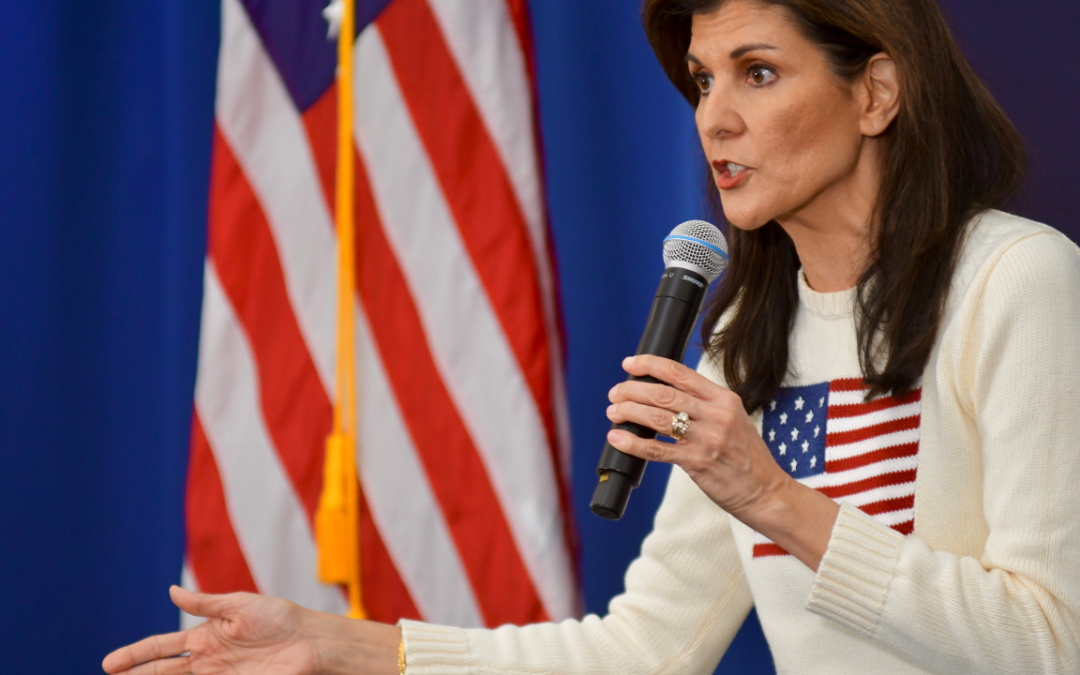The Fundamental Reason Interest Rates Will Come Down
Recency bias is found in all walks of life. When making decisions, humans tend to overestimate
the importance of the latest information. Sports fans overstate the importance of winning
streaks, jurors remember the last thing most clearly (and therefore overweight it in
deliberations), and generals make plans to fight the last war.
Recency bias skews forecasts, making them less likely to be accurate.
When it comes to interest rates, we need to be particularly aware of recency bias and how to
avoid it. Today, governments, financial professionals, and ordinary citizens are confronted with
sharply higher interest rates after decades of falling, and then very low interest rates. Recency
bias promotes a belief that high rates are here to stay.
But is that correct? Or might our recent experience lead us astray?
As recent research from the International Monetary Fund (IMF) points out, judging where
interest rates are headed in the medium term requires an understanding of the real natural
rate of interest. That is, the inflation-adjusted interest rate that neither stimulates nor restrains
economic activity. It is the rate at which the economy reaches its maximum potential output
without accelerating inflation.
Gauging the natural real rate requires an understanding of the economy’s potential growth rate
as well as the factors impacting demand, in particular savings and investment. In what follows,
we consider each of those factors in turn.
The supply-side
An economy’s productive potential is determined by the size and quality of its labor force, its
capital stock, its endowment of natural resources, as well as the efficiency with which those
inputs are combined. An economy can grow sustainably faster with a growing and more skilled
labor force, more and better tools, new discoveries of natural resources, and innovations that
improve efficiency.
The supply-side sets the ‘speed limit’ for the economy over the medium-term. In recent
decades, economic speed limits have been falling. And those declining rates of potential growth
are unlikely to be reversed.
In the hundred or so years after the US Civil War, breakthroughs in energy, electrification,
telecommunications, and transportation fundamentally reshaped societies. Human lives
became markedly more productive, and life expectancies rose dramatically. The global
population grew over 50% between 1800 and 1900, and then more than doubled over the
following 50 years, with economies growing much faster than in previous centuries.
Today in the US, receding population growth and declining labor force participation rates have
slowed the rate of growth of the US civilian labor force this century. Changing that trend would
require either large-scale immigration, a return to the labor force of millions who have exited,
or a significant extension of working lifetimes. None of those outcomes appears politically or
socially likely.
It might be possible to improve the quality of the labor force through training and education.
But there isn’t much evidence that those trends are emerging. Education reform and
investments in training are largely absent from the policy agenda.
Increases in the quantity and quality of the capital stock are more possible, underpinned by the
rapid innovation of our age. But despite a blizzard of ‘high tech’ inventions, it does not appear
that either is improving much. For example, the share of business investment in total output
has remained relatively stable over the postwar era.
Moreover, most new innovations are not lifting productivity much. The problem, as economist
Robert Gordon has pointed out, is that many of today’s inventions are not fundamentally
changing the way we make things or deliver them to market. The inventions from a century ago
that supercharged growth and doubled lifespans, (think indoor plumbing, antibiotics,
electrification, etc.) have to-date proven far more productive than, say, a mobile phone or 3D-
printing.
In addition, areas with some of the largest investment needs over the coming decades, such as
clean energy, will only substitute for the productive capacity of fossil fuels. Solar, wind, or other
renewables—as important as they may be to mitigate climate change—appear unlikely to
change how we make things, deliver goods to market, or communicate with one another.
Breakthroughs may be possible via efficiency gains (what economists call ‘total factor
productivity’). In the past, major efficiency gains followed the development of complementary
technologies. Combining cars and trucks with super-highways in the 1950s or personal
computers and the internet in the 1990s are two such examples. Both massively compressed
space and time, linking producers and consumers in ways previously impossible.
Perhaps in the coming decades, a combination of artificial intelligence and robotics will produce
similar outsized efficiency gains (and offset projected declines in labor force growth). Those
developments bear watching even if, at present, they are too recent to show up in the data.
Working in the opposite direction, however, are two powerful factors.
First, the process of “creative destruction” that Joseph Schumpeter famously described as being
the handmaiden of growth in capitalist economies. The first wave of a breakthrough innovation
chiefly benefits a few entrepreneurs. Then comes a wave of displacement, as the technology is
adapted to existing industries. Three decades ago, it was Wal-Mart using computers and
logistics to wipe out small “mom and pop” stores; a decade ago Amazon taking on Wal-Mart;
and now ChatGPT taking on Amazon, Google, etc.
Second, the end of globalization. Globalization, as an economic concept, is little more than
specialization, writ large. And as Adam Smith famously pointed out, specialization is the key to
productivity. If globalization is slowing or even reversing, then a key source of postwar
efficiency tailwinds may be turning into headwinds.
What, then, is a plausible estimate for the US economy’s long-run speed limit? Based on recent
trends and demographics, the labor force is apt to grow slightly less that 1% per annum.
Growth of the capital stock and efficiency may add roughly another percentage point to
potential growth. The trend rate of US economic growth will probably be between 2.0-2.5% per
annum. That accords with other studies. The summary of projections from the Federal Reserve,
for example, is 2.5%, while the Bureau of Labor Statistics and the Congressional Budget Office
peg US long-term growth at 2.3%.
The demand-side
We now turn to the demand-side of the economy, which determines what real rate of interest
is required to equate spending with supply to maintain full employment of resources.
Household savings are critical, with savings rates determined by returns, precautionary
motives, and demographics.
Returns on savings are driven by interest rates and profitability. We’ll return to interest rates
shortly, but we would note that profitability has trended near postwar highs in recent decades.
Profitability seems unlikely to keep rising as a share of income for economic and political
reasons. If, instead, profitability returns to lower postwar norms, then savings are apt to rise as
households will need to set aside a larger fraction of their income to reach their lifetime wealth
goals.
Precautionary savings reflect uncertainty, which cannot be forecasted. But unless one is willing
to say that the world will be less uncertain in the future, then precautionary savings are unlikely
to decline.
Demographics have mixed impacts on savings. Typically, as older workers retire, they consume
their wealth, resulting in falling household savings in aging societies. But longevity works in the
opposite direction. The longer individuals believe they will be retired, the more savings they
must accumulate during their working lifetimes.
Fiscal policy (public savings) is a big wild card. The rapid increase in global government
indebtedness following the global financial crisis and the pandemic points to the need for global
fiscal consolidation. In the US, the return of divided government—should it continue—suggests
that major spending and tax cuts are unlikely. Recall that fractious divided government during
the 1990s and from 2010-2016 produced periods of significant US fiscal consolidation.
However, other outcomes are also possible. Rising geopolitical tensions – particularly vis a vis
the US and the Russia-China-Iran triumvirate raise the specter of costly arms races. The need to
accelerate the response to climate change may require trillions of additional subsidies and
infrastructure spending to wean society off fossil fuels.
What it all means
In sum, it appears the US economy’s trend growth speed limit is modest and unlikely to
accelerate. At the same time, lower returns from financial assets are likely to induce higher
household savings. Neither demographics nor fiscal policy appear likely to offset higher
household savings. And while a private sector investment boom is possible, it is not in sight.
If, therefore, total savings rise relative to total investment, demand will struggle to keep pace
with even a modest rate of trend growth. The implication is the equilibrium real (‘natural’) rate
of interest required to equate demand and supply will have to be very low. It could even be
negative.
That conclusion runs contrary to what we observe today, namely soaring interest rates courtesy
of the Fed’s efforts to rein in inflation. But what it also suggests is the today’s inflation and the
efforts to rein it in will prove transitory.
Those who believe that higher interest rates will prevail for the next decade may be prone to
recency bias. The underlying forces that determine the growth rate of the economy, the likely
paths of savings and investment, and the equilibrium real interest rate point toward something
else, namely the return of very low interest rates in the years to come.



